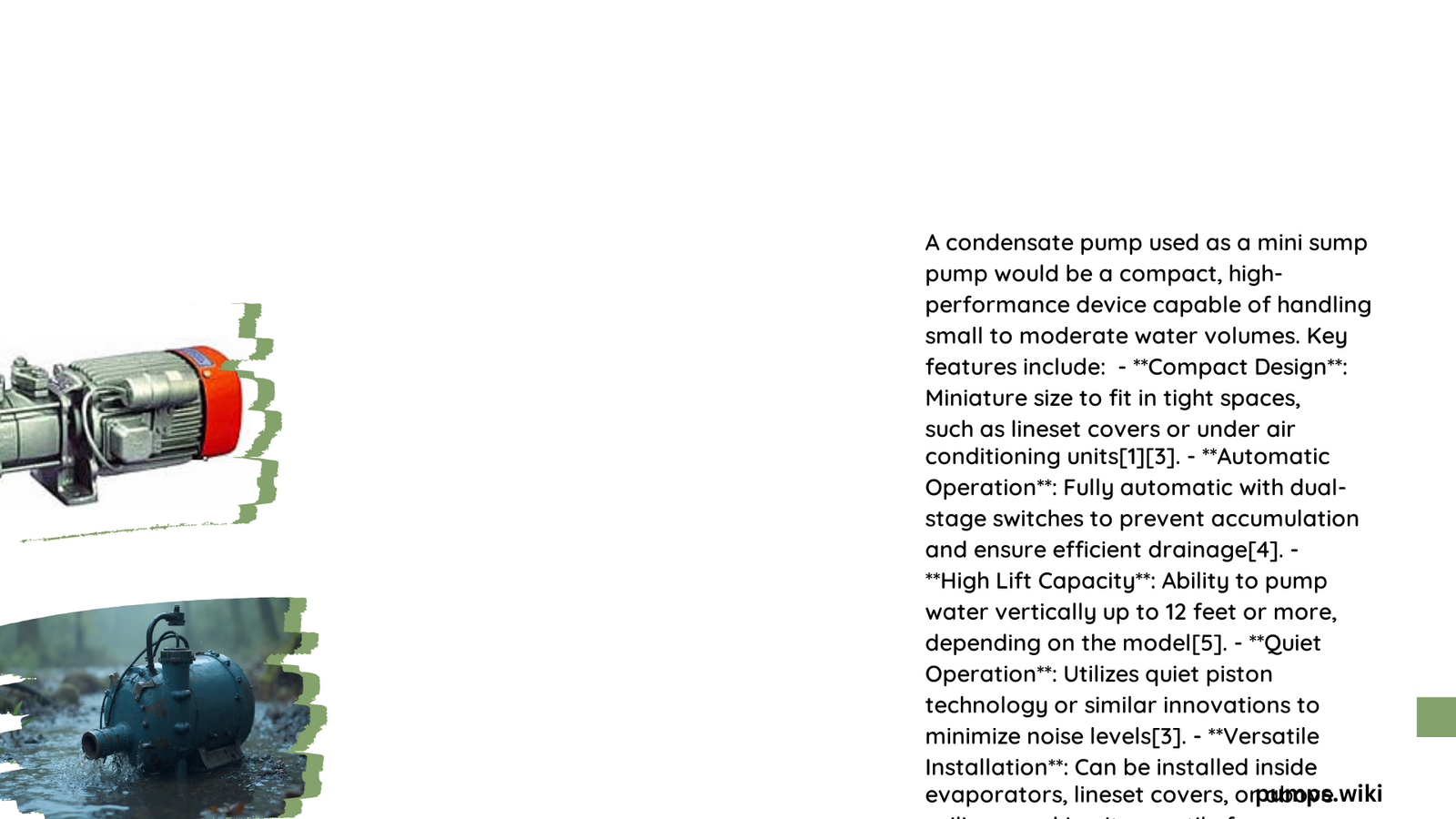Condensate pumps offer a versatile solution for water removal in compact spaces, transforming into efficient mini sump pumps for residential and commercial applications. These specialized devices effectively manage water accumulation from mini-split systems, air conditioners, and other moisture-generating equipment, providing reliable drainage where gravity-based systems fall short.
What Makes Condensate Pumps Unique Mini Sump Pump Solutions?
How Do Condensate Pumps Differ from Traditional Sump Pumps?
Condensate pumps are compact, specialized water removal devices designed for specific applications. Unlike traditional sump pumps, they:
- Operate at Lower Flow Rates: Typically range from 2.5 to 205 gallons per hour
- Compact Design: Smaller footprint for tight spaces
- Specific Application Focus: Primarily used in HVAC and cooling systems
| Pump Model | Flow Rate | Head Height | Power Consumption |
|---|---|---|---|
| Little Giant EC-1U-DV | 2.5 gph @ 1′ | Up to 33 ft | 100-240 V, 0.18 A |
| Little Giant 1-ABS Series | 205 gph @ 1′ | Up to 10 ft | 115 V, 1.7 A |
| Beckett IPC13A | 80 gph @ 1 ft | Up to 12 ft | 115V, 55 Watts |
What Are the Key Advantages of Using Condensate Pumps?
- Space Efficiency
- Compact design allows installation in tight spaces
-
Ideal for mini-split systems and small equipment
-
Precise Water Management
- Accurate water removal in controlled environments
-
Prevents moisture-related damage
-
Low Power Consumption
- Energy-efficient operation
- Minimal electrical requirements
How to Select the Right Condensate Pump?

What Factors Should You Consider?
When choosing a condensate pump as a mini sump pump, evaluate:
- Flow Rate Requirements
- Maximum Lift Height
- Power Specifications
- Installation Environment
- Compatibility with Existing Systems
What Installation Considerations Are Critical?
Preparation Steps
- Measure available space
- Check voltage compatibility
- Verify drainage path
- Ensure proper mounting surface
Essential Installation Tools
- Drill
- Level
- Electrical connectors
- Mounting hardware
- Discharge tubing
How to Maintain Your Condensate Pump?
What Maintenance Practices Ensure Longevity?
- Monthly Inspection
- Check inlet filters
- Verify electrical connections
-
Test pump operation
-
Cleaning Procedures
- Remove debris from filters
- Clean discharge lines
- Check for mineral buildup
What Potential Issues Should You Watch?
- Clogged inlet filters
- Discharge line blockages
- Electrical connection problems
- Pump motor wear
Practical Applications and Limitations
Where Are Condensate Pumps Most Effective?
- Residential mini-split systems
- Small commercial HVAC installations
- Server room cooling equipment
- Dehumidification systems
What Are the Performance Limitations?
- Limited flow rates compared to traditional pumps
- Shorter operational lifespan
- Less robust in heavy-duty applications
Conclusion
Condensate pumps provide an innovative solution for water removal in compact spaces, offering precise and efficient mini sump pump functionality. By understanding their specifications, installation requirements, and maintenance needs, users can maximize their performance and prevent moisture-related complications.
